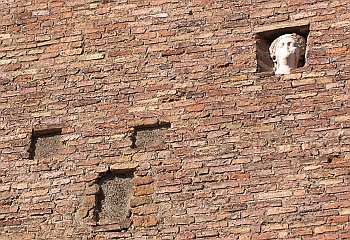 |
Again today I took another walking tour from the book Romewalks, this time in the area of Rome called Trastevere or "across the Tiber." This section of the city has its own distinctive character. Near the beginning of the walk, this head of a marble statue stares out from an otherwise plain brick wall. |
|
An elderly man reading the morning newspaper in the courtyard of St. Bartholomew Church. |
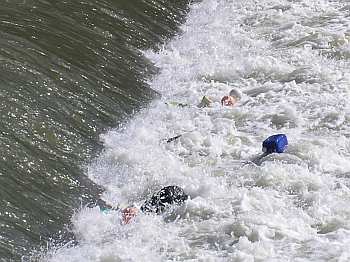 |
An artificial rapids has been created in the normally somnolent Tiber as part of a bridge foundation, and floating debris gets trapped in the roiling waters. It comes over the small falls, is sucked underwater, and then because of reverse currents is thrown back toward the falls. Car tires, wine bottles, coolers, and balls of all sizes were trapped here. |
|
This is the smallest Romanesque church in Rome. It contains the cell where St. Benedict lived and studied until at thirteen years of age he moved to Subiaco, later to begin there his monastic community of Benedictine monks who are now all over the world. |
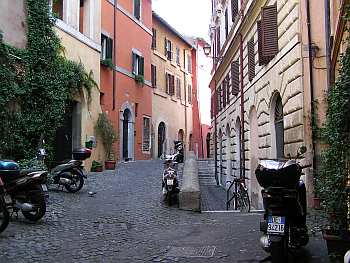 |
One of the many small, quaint medieval streets in Trastevere. Some of them are only a few meters in length. |
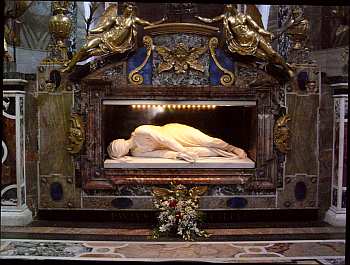 |
St. Cecelia was a prominent and wealthy Roman noblewoman who was killed because of her Christian faith. Centuries later, when her tomb was opened, her body was found to be intact and in this position after she was killed with axe blows to her neck. |
|
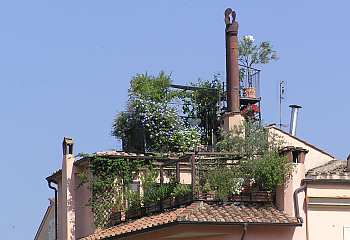 |
All of the excitement of Rome is not at street level. Many interesting sights are found by looking at the upper stories and rooftops of the neighborhoods. |
 |
Chimneys may be utilitarian but they do not have to be plain and ugly. |
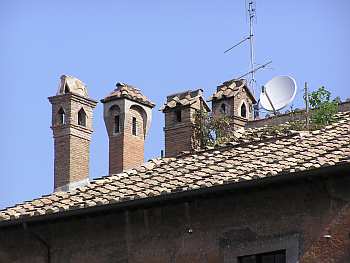 |
A mixture of old chimneys and a new microwave dish on a Trastevere rooftop. |
 |
The church buildings themselves contribute their own special style to the Trastevere skyline. |